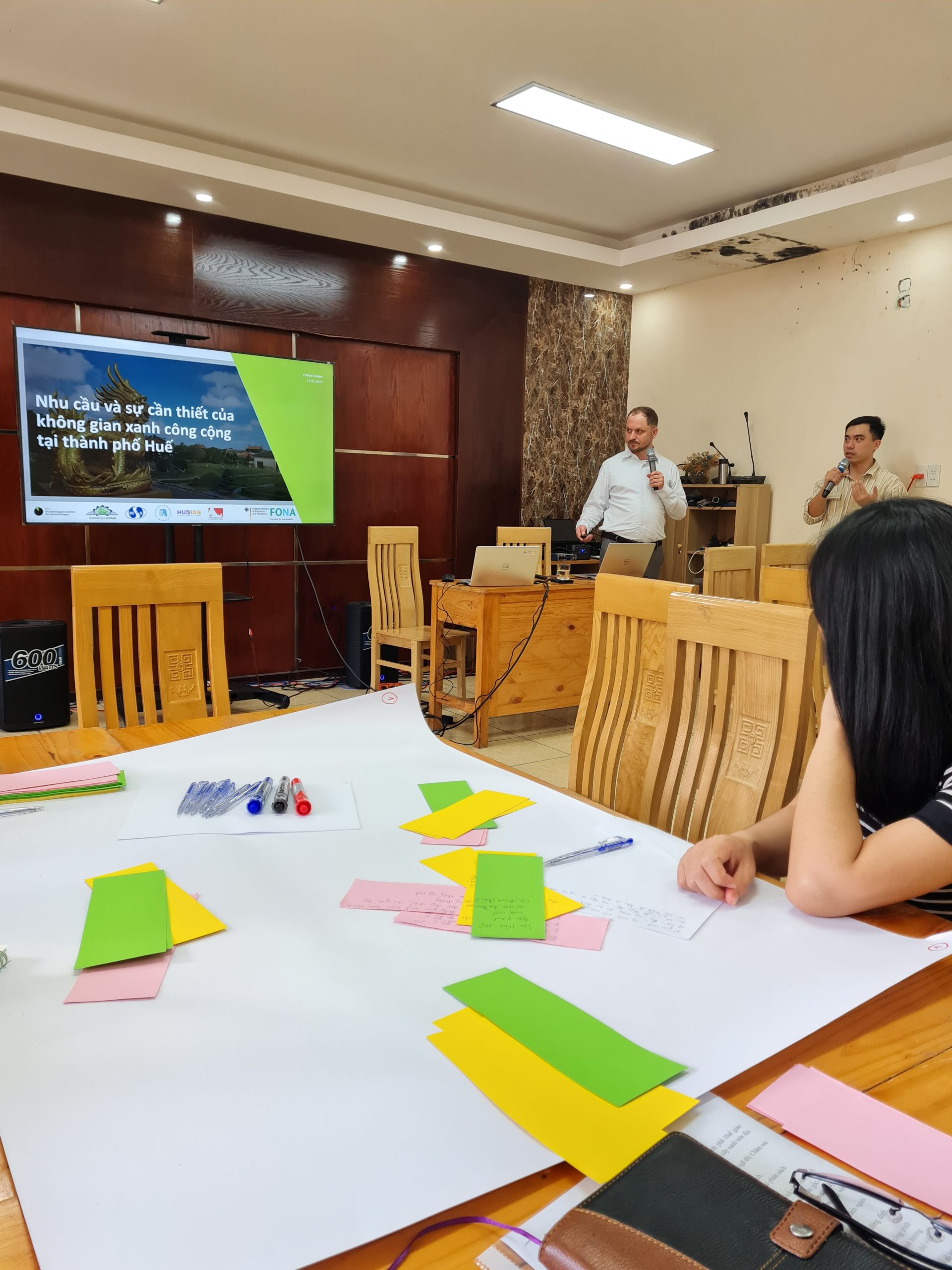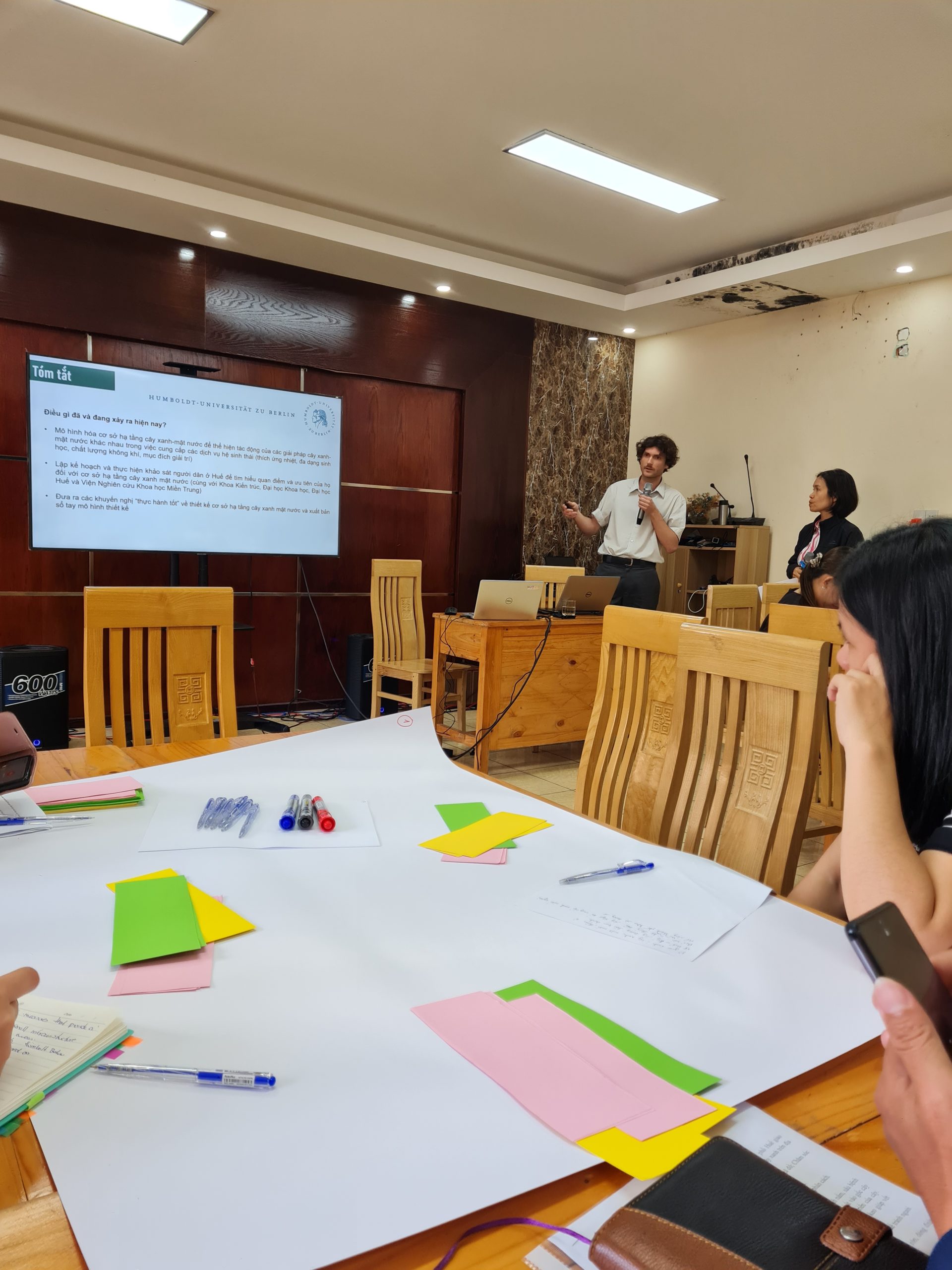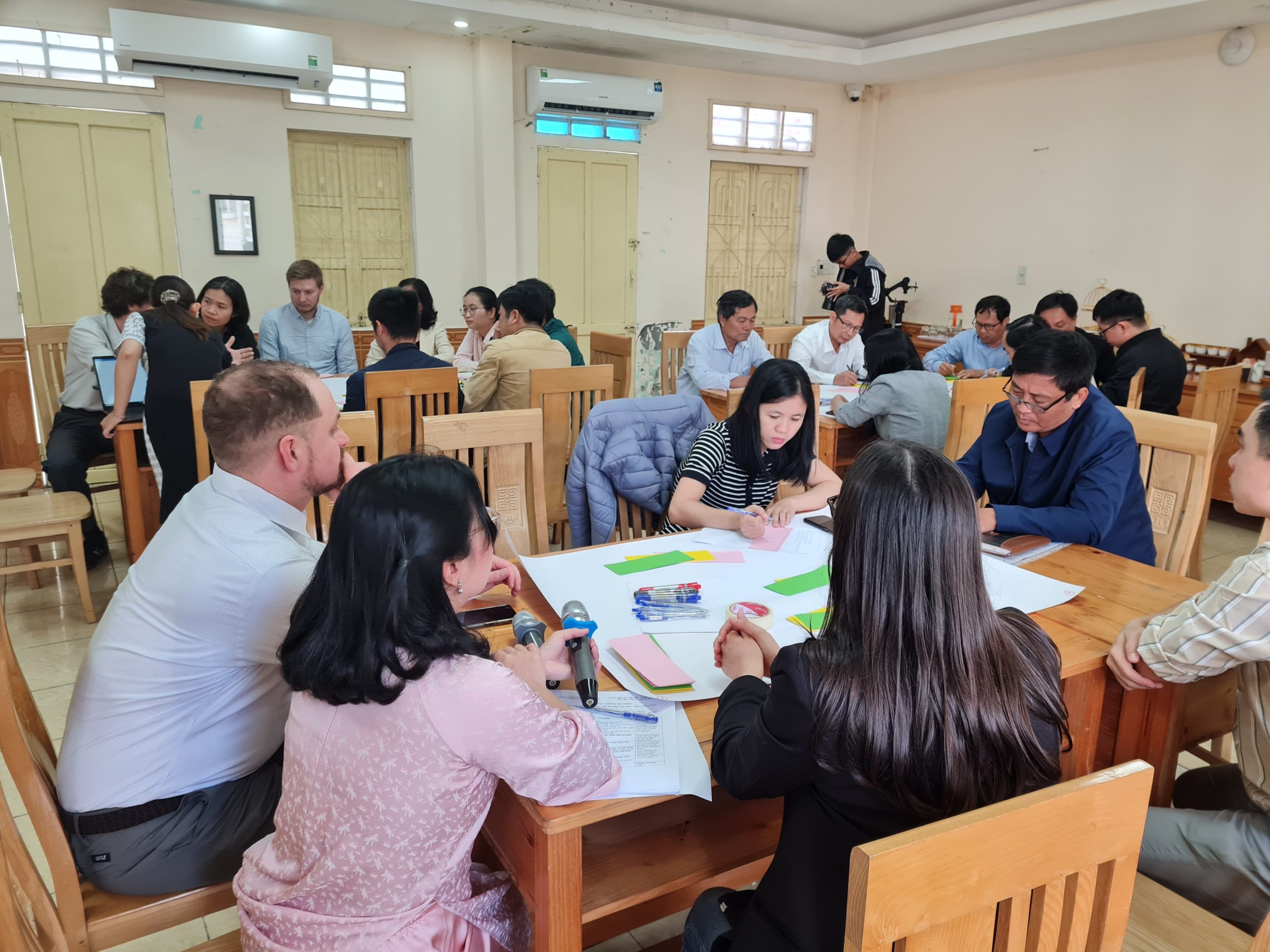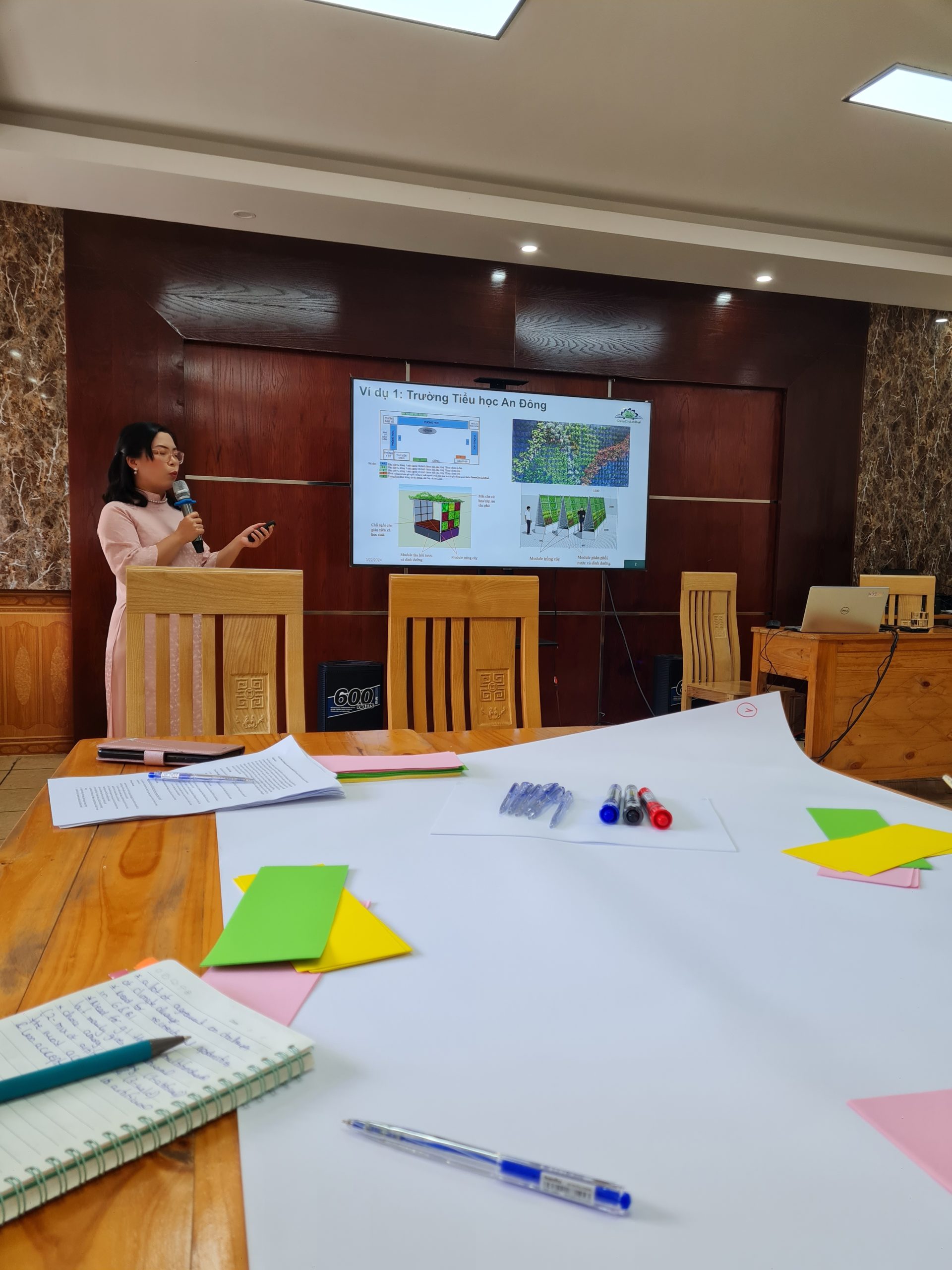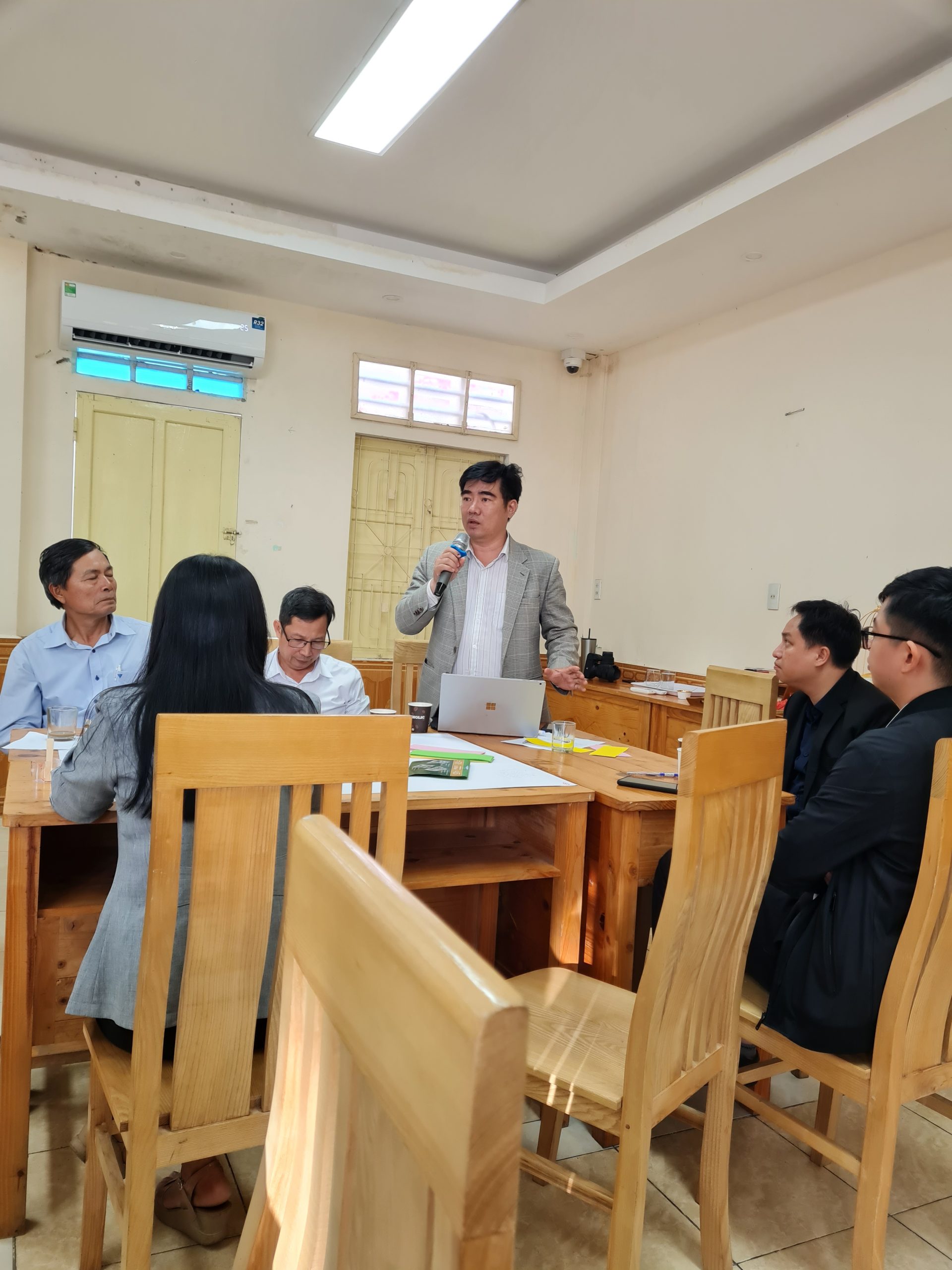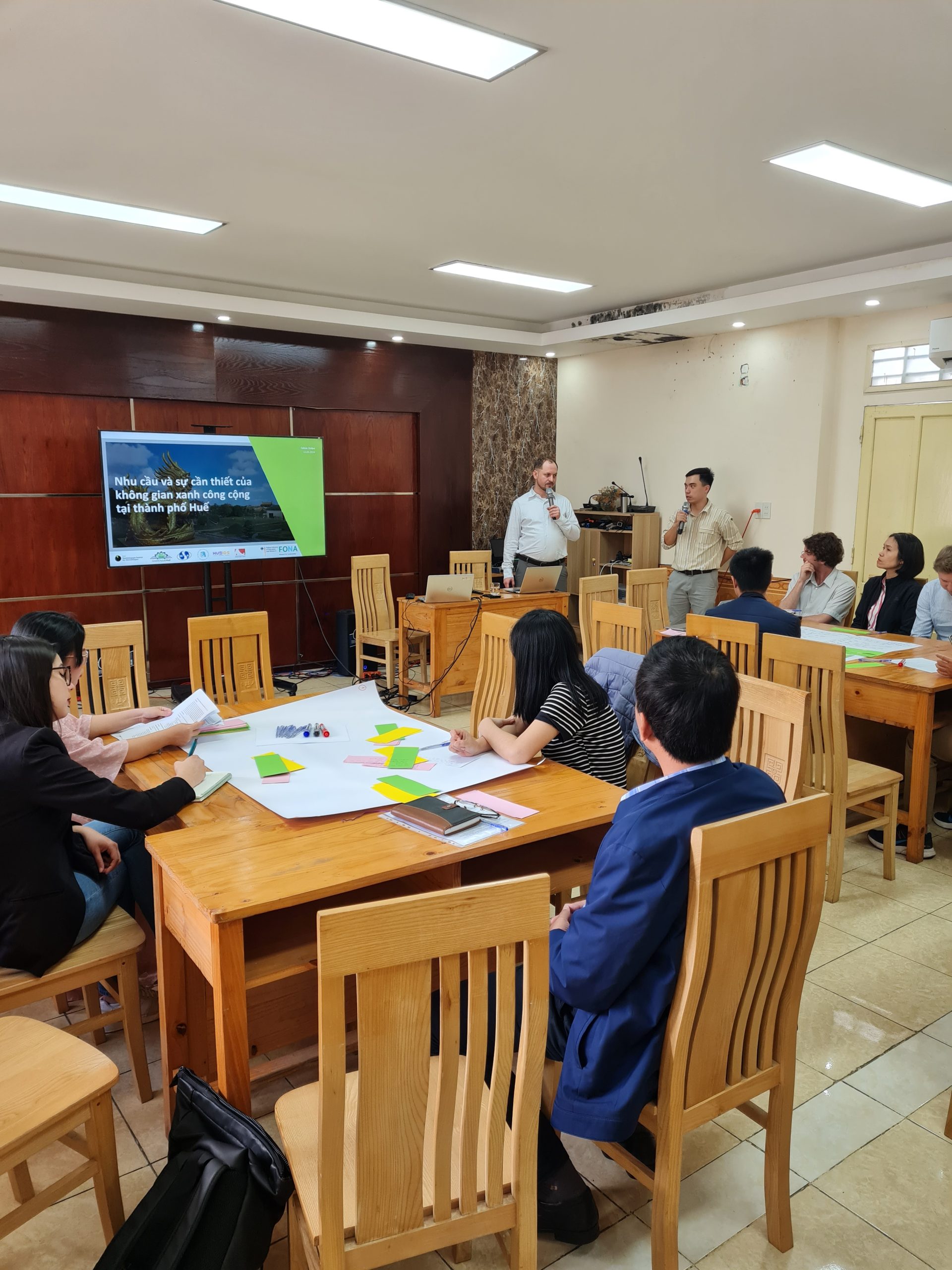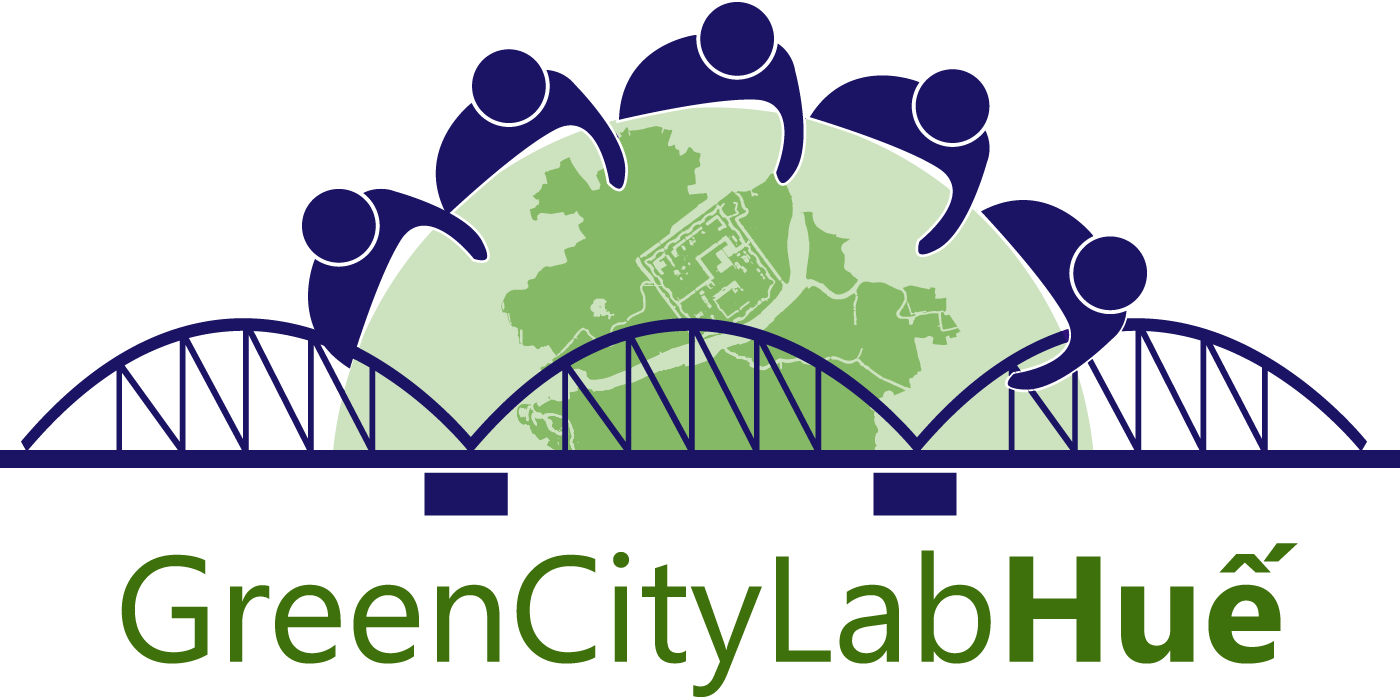How are public green spaces distributed across the urban area of Hue and how accessible are the existing parks for citizens from different parts of the city? What requirements must multifunctional green spaces fulfill? What types of green infrastructure should be further developed and newly created in Hue in the medium term? These were the key questions discussed during the third policy roundtable of GreenCityLabHuế on March 22.
Fabian Stolpe from the Independent Institute for Environmental Issues (UfU) presented the requirements and needs for public green spaces in Huế, as well as challenges in their planning and realization, which were identified during public events held during the project. Afterwards, Luca Sumfleth from Humboldt-Universität zu Berlin (HUB) and Nguyen Dac Hoang Long from Mientrung Institute for Scientific Research (MISR) presented the results of a public survey on the perception, design and functionality of green spaces in Huế, which was conducted in the districts of An Dong, Huong So, Phu Hoi, Tay Loc and Thuy Bieu. Finally, Hoang Thi Binh Minh from MISR spoke about the challenges of planning and implementing green spaces in practice, using the example of four small green spaces that the project consortium will implement in Huế city in the coming months.
In the discussion, the participating experts emphasized that although the city center of Huế is quite green with many old trees and parks along the Huong River, there are fewer green spaces in the newly developed residential areas and there is generally a lack of meaningful connection between green spaces. In addition, the average distance from many residential areas to the next public green spaces can be quite long depending on the city location, so many people have to travel long distances to use green infrastructure. In view of the constantly rising temperatures in the coming years, more public and private areas should therefore be created for green spaces in the direct residential surroundings of citizens. Green infrastructure should primarily contribute to protecting the environment, improving air quality and regulating the climate, but should also be used for recreation, social and cultural activities and education. Over the next five years, the participants would like to see the greening of new streets and open spaces with various types of trees in existing and newly planned residential areas. They also named green roofs, pocket parks, vertical greenery and urban gardens as other green spaces to be realized throughout the city.
The participants also made several valuable suggestions on how to improve the impact of the project results in the coming months. For example, the recommendations and best practice examples developed as part of the project should be tailored to the specific characteristics of the city of Hue so that they can provide specific solutions for local needs. It was also suggested that the survey could be extended to cover the entire city in order to be more meaningful. The project consortium will take the valuable input from the experts into account in future project activities.
The third political roundtable of the GreenCityLabHuế took place on March 22 at the Thua Thien Hue Institute for Development Studies. It was organized by the Independent Institute for Environmental Issues (UfU), the Thua Thien Hue Institute for Development Studies (HueIDS), the Mientrung Institute for Scientific Research (MISR), the Department of Geography at Humboldt-Universität zu Berlin and the Faculty of Architecture, University of Science, Hue University. A fourth political roundtable is planned for the end of 2024.
